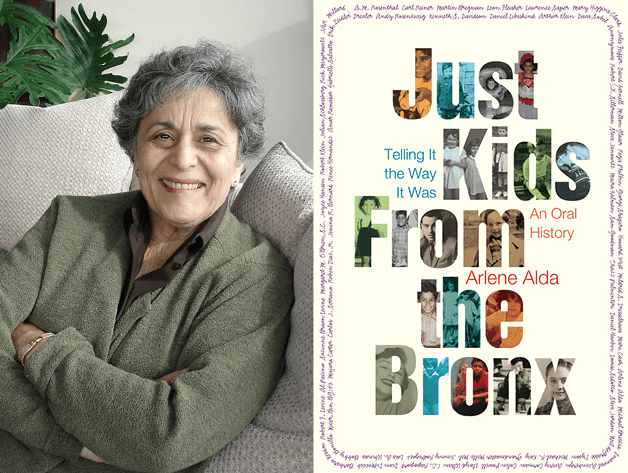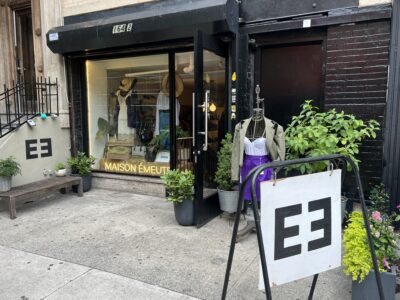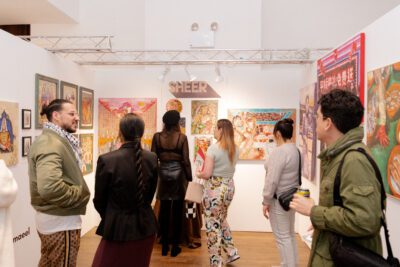Just Kids From the Bronx: Talking with Arlene Alda About How the Bronx Should Get Some Respect

Arlene Alda by Alan Alda; Just Kids from the Bronx
At a time when the outer-boroughs have finally achieved a modicum of the respect that they’ve long deserved (well, maybe not Staten Island, but what are you gonna do), author Arlene Alda has released a wonderful collection of oral histories from some of the many notable residents of the only borough to be so important that it is accorded the honorarium “The.” (Well, and also, “The Bronx” is actually derived from the fact that its land used to be farmland belonging to the Bronck family, and they used an “x” to indicate possession instead of a “cks,” so really all the land used to just be thought of as belonging to the Bronx. The more you know!)
Just Kids From the Bronx contains the stories of everyone from Al Pacino to Colin Powell, and is a funny, poignant, revelatory look at what it was like to grow up in New York’s northernmost borough. We spoke with Alda about the book, what it was like to grow up in the Bronx, and where her favorite places to go in the borough are today. Alda will be appearing at her alma mater Hunter College (from which she graduated Phi Beta Kappa) tomorrow, March 12 at 6pm, and as part of a Greenlight Book event at St. Joseph College on Monday, March 16 at 7:30pm, where she will be joined by her husband, Alan Alda, as well as author and illustrator Maira Kalman.
You grew up in the Bronx decades ago; what was your childhood like?
My family, my friends, my building ,the neighborhood, the stores,the movie theater and the public school, PS 76, were my world. I had a strict, rote- learning- public- school education,which was a big contrast to the freedom I had to play outdoors, exploring the neighborhood, unfettered, after school. In those years, in the late thirties and well into the 1940s, the WWII years, the streets were our playgrounds, mostly because there was no car traffic. Car manufacturers were producing for the war effort, and civilian cars were very limited. That along with gas rationing made the streets in our neighborhood pretty safe ones for kids playing there. The neighborhood was also a place where everyone knew everyone else and so there was a comfort level being with friends or even being alone, outdoors, from kindergarten on.
These were the days before TV and before air conditioning, so the streets also were places of socializing. I guess I also got toughened up by the street culture. It’s where I learned not to be a “cry baby” (what a dreadful term) if I skinned my knees falling on the hard pavement while on my new roller skates; those with four wheels, the sole of which was clamped onto my shoes. It’s where I learned to keep away from some of the kids whose language and behavior my parents didn’t approve of. It’s where I learned all the skills of taking turns and being a good sport while waiting to play jump rope or potsie. (hop scotch.) It’s where I learned to stick up for myself, and still be friends with the person if there were a disagreement of some sort.
And its where I looked forward to the marble season, selling my used comic books, playing with my pink Spalding ball and just hanging out on the stoop or the block (Barnes Avenue).
Tell me a little bit about what makes a Bronx childhood special; what do kids who grow up there get that you can’t come by anywhere else?
I think a lot depends on when you were brought up as well as where you brought up. For instance, nowadays, things are different than in my day. Kids now have TV, video games, all kinds of electronic gadgets that are inducements to staying indoors. That coupled with air conditioning, streets that are full of traffic, possible crime, makes for a childhood very different than the one I had. There’s also a lot more poverty than when I was growing up.
Years ago, a Bronx childhood meant one where the energy of The City—Manhattan—was a subway ride away, but the nourishment of the neighborhood and family was at home, in the Bronx. Rooting for the winning ball team, the Bronx Bombers—the Yankees—must’ve had some influence on our self image, too… winners! In addition, the Bronx has always been associated with immigrant and ethnic groups, so the dream of having a better life than one’s parents was always alive and possible. Beyond those simple observations, there’s the mystery of it all. And I’m comfortable with that.
How did you go about finding contributors to this book? It turns out some of the most celebrated people in just about every professional field imaginable—sports, politics, acting, literature—all share a Bronx background in common!
I started with people I personally knew, who were prominent in their chosen fields. There’s Regis Philbin,TV host and personality; Martin Bregman, producer of movies such as Serpico, Dog Day Afternoon and The Seduction of Joe Tynan; Mary Higgins Clark, writer of world wide best selling suspense novels; Neil deGrasse Tyson, astrophysicist, head of the Rose Center Planetarium in NY; David Yarnell, producer and documentary film maker; and Mickey Drexler, the CEO of J.Crew, who was also the original inspiration for the book.
From that list of friends, I networked and ultimately accessed lists to get in touch with accomplished Bronxites of various ages. Just Kids From the Bronx contains interviews I did with 64 different people spanning seven decades of living in the Bronx. How terrific that so many accomplished people come from the Bronx! I’ve only touched the surface of that treasure.
What are some of your favorite anecdotes from the book? Anything surprise you or strike a chord in a manner that made you think “only in the Bronx”?
I don’t think I have favorites, but when David Yarnell disclosed he grew marijuana (pot) in the Bronx park at age 16, to get some excitement and a few extra dollars into his life, I was blown away. This happened in the 1940s! And in a public park???
And decades later when Grandmaster Melle Mel described his dangerous childhood and how he sought refuge in music… what became the beginnings of hip-hop culture… we’re talking the street culture of the Bronx at a time when those streets in the South Bronx were not for the weak of spirit.
I love that Carl Reiner, now 93, made the audience laugh when, in high school at a performance of a song, (title translation: “I Am a Duck”) he couldn’t help but walk onstage behind the soprano, waddling like a duck. The kids in the audience cracked up and he was thrown out of the chorus. There are so many anecdotes that are surprising, running the gamut from very humorous to extremely sorrowful. I was very fortunate to have gained the trust of my fellow Bronxites in the book, so their candid and unguarded stories could get told.
What are some of your favorite places to go in the Bronx? Where would you recommend Bronx-novices go for the day?
The New York Botanical Garden is the world-class place I visit a lot. There are constantly changing shows and events throughout the year and the beauty of the place is unsurpassed. Just across the road from the Botanical Garden is the Bronx Zoo. Another world-class attraction.The zoo was a special place to visit for me, especially as a kid. Nearby is Arthur Avenue, the heart of a real Little Italy; a viable and true Italian neighborhood with markets, restaurants and interesting stores and interesting people. It’s for real, even though it’s a tourist attraction. Further east, there’s Pelham Bay Park, which has a beach (Orchard Beach) and picnic areas, nature trails, and a lot of wilderness to explore.
Of course, there’s Yankee Stadium where one can also get guided tours as well as see a game, when in season. Near Yankee Stadium is the Bronx Museum of the Arts, a beautiful museum and community resource open to the public free of charge. I also love walking along the large shopping streets in the Fordham Road area, looking for bargains, just like I did when I was a kid. If one wants to see upscale neighborhoods there’s also the Riverdale/Fieldston section of the Bronx. It’s where Toscanini once had an estate and where the Kennedys once lived. One can also visit Wave Hill, a cultural institution with a museum and gardens, overlooking the Hudson River. The Fieldston section still has private streets maintained by their homeowners’ association. The Bronx is beautiful!!!! (As Lloyd Ultan, the official Bronx historian rightfully says.) There’s public transportation to all these places, but in a day? Definitely possible, but VERY tiring.
I think it would be fair to say that, until quite recently, New York’s outer-boroughs didn’t really get all that much respect. But now with “Brooklyn” becoming synonymous with a certain kind of cool, do you think the Bronx will follow suit?
Yes… respect. I sound like Rodney Dangerfield. I’m happy for the Brooklynites, but remember the song with the lyrics, “New York New York. It’s a hell of a town. The Bronx is up and the Battery’s down.” Yes, the Bronx is definitely up, and not just in its geography. It’s a borough with a lot of potential, so hopefully one that will become “cool,” too.
What’s one thing you’d like people to take away after reading your book about what the Bronx is really like? What misconceptions would you like to set straight?
Emotionally, I hope that the reader feels as if they got to know all the people in the book and that they liked them. And intellectually, I hope these Bronx “Kids” leave the reader with a broader picture of the American Dream realized. I also hope that all of us celebrate our own beginnings, no matter where we grew up, inspired by the stories told by these beautiful and interesting people from the Bronx.
You might also like 



















